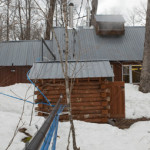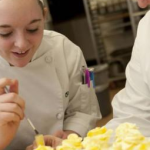Shortly after the relaunch of the Paul Smith’s College website, we did some usability testing. Usability testing can occur on a live or beta site and the intention is to evaluate levels of success or frustration as users try to accomplish tasks on a new site. As part of a usability testing script, we might ask:
- “How would you find a list of majors and minors?”
- “What would you click on to learn about alumni events?”
- “Where would you go to register for classes?”
For more on usability testing in the context of a website relaunch project, I recommend a three-part series about testing written by mStoner’s Quality Assurance Manager, Kylie Stanley Larson.
What did we uncover during usability testing for paulsmiths.edu?
Testers referenced the bold typography, the large imagery, and the plentiful white space as welcome design elements. They also described the new paulsmiths.edu as easier to use due to more intuitive navigation. These testing results made our hearts sing. But there’s more — the testing also provided a path for future site enhancements.
Imagery and Graphics
Research, anecdotal evidence, and testing sessions for many clients tell us that website visitors are influenced by high-quality imagery and graphics. Our Paul Smith’s usability sessions confirmed that knowledge and helped us understand the extent of their impact. All individuals participating in the usability testing commented on the visual assets on paulsmiths.edu — all noted the homepage slider, the Instagram feed, the video feed, or the infographic as compelling. When asked how the visual experience might be improved, users:
- Repeatedly noted a preference for images that are directly related to the page content or site section.
- Requested more photography throughout the site.
- Expressed hope for higher quality imagery, both in terms of resolution and composition.
Website work is never done and a focus on visual content will pay off.
Website Tools for the Internal Community
The Paul Smith’s usability testing also confirmed that the on-campus community uses the website as a tool. Convenient ways to get info related to living and working on a campus are paramount.
- Testers missed quick access to… <waitforit> Weather! One student said, “I go to the site to see how cold it is outside…I haven’t been able to find the weather on the new site. I don’t want to have to dig through the site to figure out how I should dress that day.” Paul Smith’s unique location in the Adirondack Park of way Upstate New York makes this a legitimate request.

- Other testers pointed out that menus for one dining location were missing. A student said, “I always look at the Lakeside menus. It’s one of my big links.” Food on any campus is important but Paul Smith’s corners the market on education for hospitality with programs in culinary arts and baking. I can personally vouch for the quality of food on the Paul Smith’s campus.
An .edu website should take into account the transactional needs of the on-campus community.
Our best advice?
Remain committed to a cycle of planning, measuring, and auditing. The quantifiable data you can receive daily from analytics, and periodically as you conduct usability testing, is invaluable and will help you know when it’s time to make corrections and changes. And, decisions about the prioritization of enhancements can be grounded in data about user preferences. Your website is not a project, it is your most important communication asset.
Every day, a team of people needs to come to work thinking about what’s next for the website.